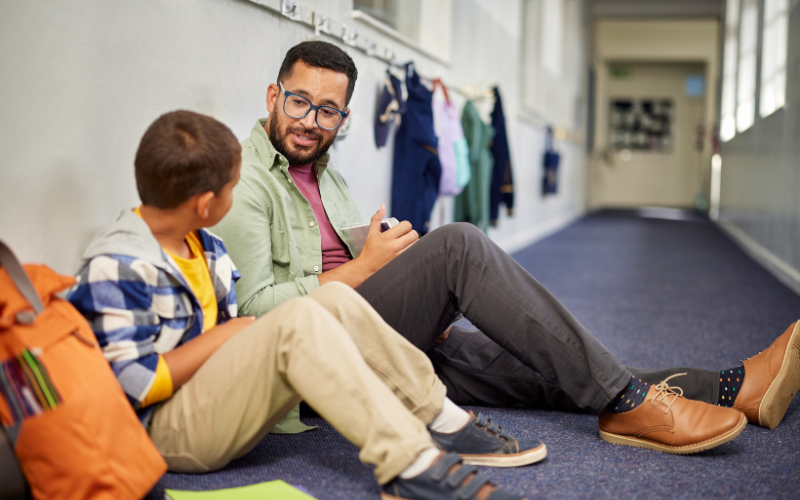ARTICLE
New to teaching? How to manage your classroom
When you’re starting out as a teacher one of the biggest challenges, and most important parts of the job, is managing your classroom in a way that sets everyone up for success, including yourself. The secret? It all starts with building a positive, respectful relationship with your students from day one. A classroom built on trust and mutual respect is a place where students feel safe, engaged, and ready to learn. Plus, you’ll see fewer behaviour issues and more meaningful learning. Of course, building that kind of classroom environment takes time. But the good news is that there are simple, effective strategies anyone can use to get better at it. Here are a few that can really make a difference:
May 28, 2025

1. Build Real Relationships
This is hands-down the most important classroom management strategy. When students know you care about them, they’re more likely to care about what you’re asking them to do.
Get to know your students as people. Learn their interests, ask questions, listen when they talk, and show empathy when they’re having a tough time. Be genuine and remember building relationships isn’t a one-and-done task, it’s ongoing. Keep checking in, learning, and adjusting.
2. Set Up Structure
Students thrive on clear expectations and consistent routines. Structure makes your classroom feel predictable and safe, and that leads to better focus and fewer disruptions.
Start the year by clearly laying out your rules and routines, then practice them together. Stick with them. And keep your lessons active, minimise downtime so there’s less chance for things to go off track. When students know what to expect, they feel more confident and are more likely to stay engaged.
3. Use Humour
Laughter can break down walls and build connections. You don’t need to be a stand-up comedian, but finding moments to joke around, tell a funny story, or share a laugh can go a long way in building a positive classroom atmosphere.
Use humour in your lessons when it fits, whether that’s through light-hearted videos, funny examples, or just being playful. It’s okay to have fun with students. In fact, it makes learning more enjoyable for everyone.
4. Point Out the Good Stuff
It’s easy to focus on what’s going wrong but try to get in the habit of spotting what’s going well—and say it out loud.
When a student helps a classmate, works through a tough task, or just shows up and tries their best, acknowledge it. It doesn’t have to be a big production. A quick, “Hey, I saw how you kept at that, well done!” can mean a lot. The more you celebrate effort, the more students will show up with it.
5. Show Up Outside the Classroom
If you want to earn some instant points with students, show up to something they care about, whether that’s a sports game, a school play, a music concert, or a robotics competition.
You don’t need to go to everything, but attending even one event shows students you see them as more than just seats in your classes. It also gives you something to connect over.
6. Have a Plan for When Things Go Sideways
Things will go wrong. Someone will break a rule, push a boundary, or challenge your authority. It’s part of the job. The trick is being ready for it.
Decide in advance how you’ll handle common issues. That way, you’re not scrambling in the moment. When something happens, respond calmly and consistently: “You chose to do X, and that means Y.” No big emotional speeches, just a clear consequence. Keep it respectful, and your students will learn from it.
As the year goes on, it’s easy to get caught up in all the grading, planning, and to-dos. But don’t lose sight of what matters most, your relationships with your students. The time you invest in connection pays off in better behaviour, more engagement, and a classroom that feels good to be in.
And if you’re ever feeling overwhelmed, talk to your fellow teachers or your principal. You don’t have to figure it all out alone.

